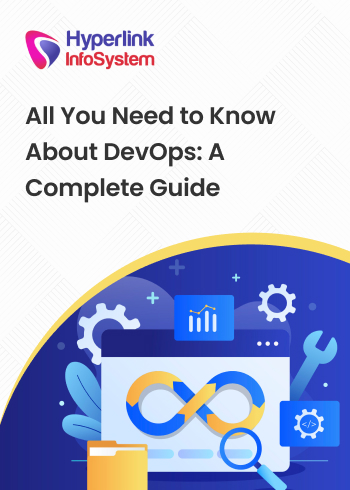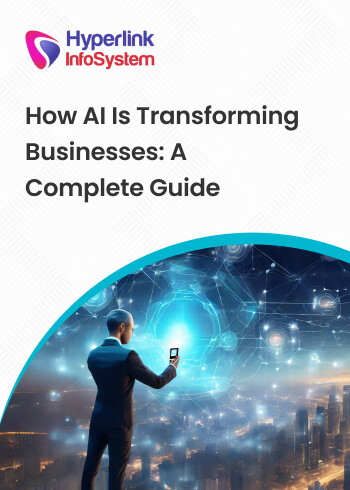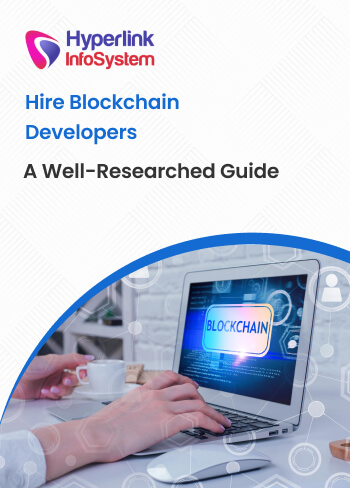Most Trusted APIs To Build Successful On-Demand Logistics Apps
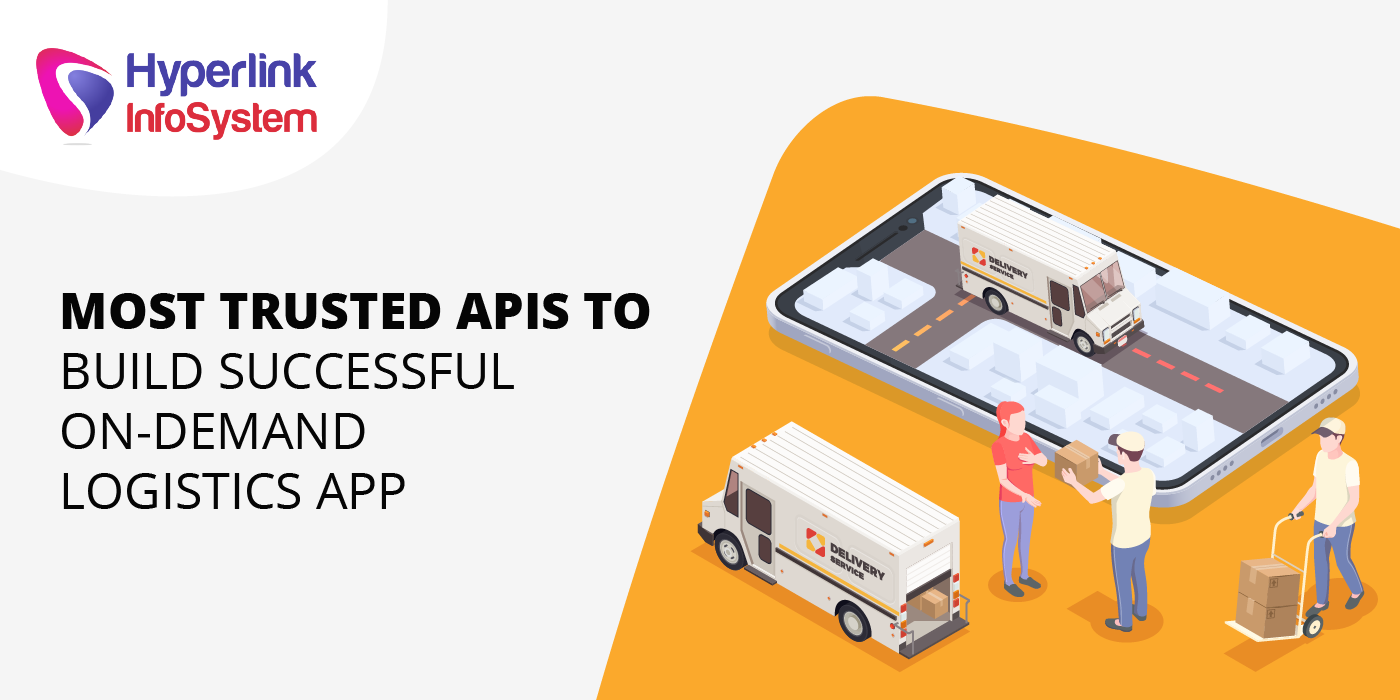
A comprehensive mobile application integrated with other systems enabling a company’s logistics or supply chain makes it easier to manage goods, fleet, shipment details, drivers, routes, and more. This process of developing such an app is made easier by the use of a trusted application program interface or API.
What is an API? It is the development environment that provides the user with the tool needed to interact with data from many different applications. In other words, API allows access to the application or platform of another party.
A popular API often used by mobile app developers is Facebook’s API. Using the API, app developers can gain limited access to Facebook members’ profile identity which can be used for identity verification purposes.
The Facebook API is what enables users or members of Facebook to register with a third-party app using their Facebook account. Additionally, users can post content from third-party apps to their Facebook News Feed thanks to Facebook’s API. A major reason for the increasing user base of many apps today is Facebook API.
There are some other popular APIs as well that are having the same impact. These APIs include Twitter API, LinkedIn API, YouTube API, Gmail API, Google Maps API, and AccuWeather API. While these APIs are helping many different types of apps to make a real impact, only Google Maps API is truly useful for on-demand logistics app development.
Luckily, the best APIs for on-demand logistics app development are listed and discussed in detail in this research on the most trusted APIs for on-demand logistics apps. However, before we start the discussion on the APIs, it is important to look at the relationship between APIs and app development, the core features & benefits of on-demand logistics app, and the 5 most important things to know when using APIs in app development. Let’s begin the discussion.
The Relationship Between APIs and App Development
It is often said that APIs and app development mature side by side. This is because as people are exposed to advanced technology and get used to it, their expectations from mobile applications increase. They want apps with personalization features that have a seamless user experience (UX). This is where APIs come in handy. They make it easier to develop apps with personalization features and a seamless user experience by allowing easy integration with other applications or platforms.
The complex or redundant parts of an application can be externalized with the help of an API. Additionally, developers no longer have to reinvent what’s already built. Instead, they can focus on their core intellectual property (IP) that adds value to the app development process. Therefore, using API not only allows developers to benefit from what’s already built but also enables them to minimize the cost of maintaining the system.
By leveraging the building blocks for the key but not core features of the app, developers can free themselves to focus on the core product that they are developing. Let's take a hypothetical end-to-end supply chain company as an example. Say, a key feature of the company’s app is the search experience. However, it is not a core feature. Since it is not a core feature, rolling out a search solution in-house would not be a cost-effective option. The money and time spent on this can be saved with API. This time and money saved can then be used for a better core product.
The search experience that we have just used as an example; the above reasoning applies to securing payments and authenticating users as well. By leveraging trusted APIs, these redundant and complex processes can be externalized.
By allowing developers to get close to reusable components and code, APIs help to enhance the shelf feature capabilities and develop unique use cases or even business applications. The complexity of the app development process is minimized by the standardization of the interfaces and the interaction of developers with them.
Instead of building features from scratch, app developers can simply reuse the APIs that are designed for the same function as them. The best part is that developers do not need to learn the different programming languages that are used to develop the APIs nor is there any need to understand the API’s intricacies. The only thing the developers need to know is the function of a particular API and how they need to interact with it.
Today, it has become easier than ever to work off-the-shelf with APIs to develop mobile applications that solve a business use case, such as the need for on-demand logistics. Thanks to APIs, developers can create user-friendly and feature-full on-demand logistics apps. This is because they no longer need to spend time on app features that do not directly add value to the core product: on-demand logistics.
The Role of APIs in Mobile-Specific App Development
Mobile app development has been fundamentally changed by application program interfaces (APIs). This is because APIs make it possible for two entirely different applications to interact with each other and share resources. It can be said that “behind every successful mobile application is an API”.
So, why are APIs so useful in mobile application development? Firstly, they enable controlled and consistent sharing of code for reusability in a technical development environment. For example, if a developer created a complex and unique mobile app and wanted it to be shared or used internally or externally, then they can do this with the help of an API.
This has eliminated the need for developers to reinvent the same code repeatedly. Another advantage of APIs in mobile app development is that they help to minimize inconsistencies and consolidate the touchpoint in a central location. This makes it easier to maintain the app. API is also useful from a security point of view. This is because it enables developers to open an application or the various capabilities of a platform without making the company vulnerable to possible intellectual property (IP) theft.
The 5 Most Important Things to Know When Using APIs In App Development
Like apps, APIs aren’t all about fun and games. Instead, they are a vital component of the app development process. Therefore, serious attention needs to be paid to how you use the APIs in the development process and interact with them. Following are the 5 most important things to know when using APIs in app development.
1. Getting APIs for App Development Right Requires Close Collaboration
The most important thing needed to ensure successful app development is communication and understanding between developers, internal stakeholders, and the client/end-users right from the very beginning of the app development cycle.
For developers, it is critical to deeply study the business for which the app is being created. This requires an understanding of the business’s core product/service, its customers, the available data about the business, and the specific requirements of the business/company from the app.
Good communication and collaboration from the start and throughout the app development process are needed to deliver the product or app desired by the client/end user. If communication and collaboration stutter during the initial stages of app development, then the end result will be an app that confuses the client and all other people that matter.
On the other hand, getting communication and collaboration right is likely to result in an app with a clear and rewarding experience. Therefore, app developers must work closely with other internal teams such as the sales and marketing departments, the IT team as well as the management to understand the requirements for the API and the app.
If developers do not make the effort to understand how the system of the client works, they will never be able to arrive at the requirements for the API. If this information is not available to developers, then they should expect an app that is confusing or does unexpected things.
If you want to use APIs that add value to the app and make it quick and responsive, then communicate and communicate with all stakeholders throughout the app development process. In fact, you should begin the relationship-building before the project begins. This will make the process of choosing APIs and creating the app much easier.
2. Understand What You Want Your App to Do
You need to know what you want your app to do right from the beginning of the app development process. This means that you need to know the features and services that your app needs to have. Once you have this information, find out the APIs that can enable them.
Determining the features and services at the beginning is necessary because choosing and then using the relevant APIs halfway through the project can lead to delays that are costly. Generally, the process to determine the features and services needed by the app and the APIs that can enable them begins with a discovery phase.
In this phase, the developers brainstorm with other stakeholders to come up with ideas for what the app needs to do. This is followed by mapping the user journey and then thinking about how the app is supposed to behave. All this allows developers to have a good idea of what the app is supposed to do.
However, until the API has been thoroughly defined, going further than this is not advised. After the specifications of the app are mapped out, it is possible to clearly understand the behaviors to expect from the app.
With this knowledge, you can get the information required from the server. This is the list that kick-starts the process to find the API for different app specifications. This means that there is a symbiotic relationship between the app and the API, with one informing the other. However, the choice of API must be based on the tasks that you want the app to complete.
3. APIs Are More Efficient Than Pulling an Entire Website to Your App
Website and apps interact with the server in completely different ways. For example, the only thing that app developers need access to is useful or relevant bits of the available data. On the other hand, web developers need to access the entire database.
This is one of the reasons websites are generally bulkier than apps. With this in mind, it would be unwise to pull an entire website to your app. Pulling in all the information directly from your website will slow down your app and make it less efficient.
There are two cardinal sins when it comes to app development: slowing down the app and consuming mobile phone data. Pulling an entire website to your app leads to both. When it comes to mobile app development, the greatest objective needs to be app efficiency. APIs can be the difference between an inefficient app and one that performs exceptionally well.
Today, getting relevant APIs for an app is fairly simple. However, it is important to first check with the developers working on the app to find out what APIs are needed. This may require an extra bit of effort from all the stakeholders, but it will be worth it in the end.
4. Not All APIs are Free
You may get slightly discouraged by this but don’t be. This is because free APIs won’t cost you any money, but they won’t help you too far with your app. On the other hand, the paid APIs allow you to accomplish all that you want your app to do.
The APIs for which you need to pay a fee generally provide specialized data and this has a few advantages such as the ability to monetize the app, and factor in the data in your app planning. Another thing is that these APIs cost a fraction of a penny per user. So, you will be charged less than fifty dollars for a million users.
5. You Can Choose from Public and Private APIs
You will find thousands of APIs that are available for public use on the web. These APIs are referred to as public APIs. These APIs range from AI APIs to language translation and image recognition APIs. These APIs allow you to equip your app with impressive functionality.
While the public APIs are free and easily accessible, don’t make the mistake of assuming that you can easily and quickly incorporate them into your app. Instead, a certain level of skill and creativity is needed to incorporate the APIs into the app which makes them useful and valuable. However, these APIs are built for creative and unique use.
Private APIs are needed when a business wants to leverage volumes of data for its app. Often, these APIs need to be created from scratch and designed with a specific purpose in mind. However, private APIs are generally for highly specialized business use cases. APIs for most business use cases for which an app is developed are already available.
The Core Features and Benefits of On-Demand Logistics Apps
The logistics industry is unrecognizable from a decade and a half ago. Fifteen years back, you would have had to wait patiently in the sweltering hear, with eyes stuck on your watch and in anticipation of the delivery driver’s arrival who was supposed to reach almost an hour ago.
This was a time when most all people expecting deliveries, personal or business, would be left frustrated to the core and without any possible solution to their woes in sight. Thankfully, things have progressed over the years and now we have alternatives to conventional and poor delivery or logistics services.
Advancement in the IT sector has given birth to many applications that make logistics and supply chain industries, a transparent and seamless process. Now, people don’t need to die wondering where their package is, or whether will it arrive or not arrive on time. Instead, they can keep tabs on their package in real time with on-demand logistics apps.
Not only do on-demand apps allow individual consumers and businesses to keep track of their package, but it also makes it easier for the transportation or logistics driver to reach the location on time. In other words, on-demand mobile apps are helping to transform the logistics industry.
On-Demand Apps are Taking the Logistics Industry into a New Era of Transparency and Innovation
According to National Technology Readiness Survey (NTRS) usage of on-demand apps increased from just under 25 million people in 2016 to over 86.5 million users throughout the years. The study conducted by HBR made the following important discoveries that show the impact of on-demand apps around the globe.
(Consumer spending in the on-demand economy increased significantly from 2016 to 2017 [Image Source])
From the HBR study, we find that consumer spending in the on-demand economy increased significantly higher. The sectors that contributed the higher were the online marketplace, transportation, housing, food delivery, and health & beauty.
While the greatest contribution in the on-demand economy industry was by the online marketplace, logistics-related sectors have contributed much more too. Spending on on-demand platforms crossed 57.6$ billion whereas $5.6 billion came from the transportation industry.
On the other hand, spending in the food & delivery sector crossed $4.6 billion. Together, the transportation and food & delivery sectors experienced a growth in on-demand spending of $11.7 billion in just one year. These figures are not the latest ones; the spending on on-demand platforms in these sectors is probably even higher now.
The point of all this is that on-demand apps are having a significant impact on the logistics industry, which includes both the transportation industry and food & delivery services.
The success of Uber has been the driving force behind this growing uberization of the logistics and transportation industry. What started as a simple idea to allow commuters to conveniently find a cab to get from point A to Point B has now spread its wings into the transportation, logistics, travel, and food & delivery sectors. The following infographic shows where the most investment in the on-demand economy is being done.
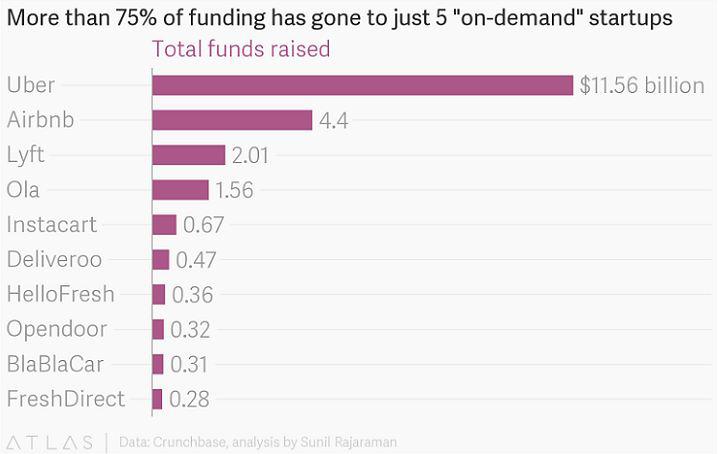
( 10 Startups in the on-demand economy with the greatest investment )
From the above infographic, we find that expectedly the startup with the greatest investment in the on-demand economy is Uber. Airbnb is next followed by Lyft, OIa, Instacart, and Deliveroo. The list is completed by HelloFresh, Opendoor, BlaBlaCar, and FreshDirect.
The most interesting observation from this is that 8 of the 10 startups in the on-demand economy with the greatest investment are transportation or food & delivery services, both of which are part of the logistics industry.
According to Transparency Market Research, the global logistics market will be worth $15.5 trillion by 2023. This means that we can expect further investments in on-demand apps and platforms in the logistics industry in the coming years.
Types of Logistics Apps
There are many different types of logistics apps. However, the four most common types of logistics apps are fleet management apps, on-demand logistics apps, warehouse apps, and tracking apps. Below is a brief introduction to each.
1. Fleet-Management Apps
As the name suggests, fleet-management apps make it easy for you to manage your entire fleet. They allow you to not only keep track of but also record the data about your fleet or a particular vehicle in your fleet in real time through an app. After the app is assigned to the driver, the relevant people can manage the fleet through an end-to-end mobile solution.
2. Warehouse Management Apps
A key part of any logistics or supply chain business, the warehouse can be easily managed using a warehouse management app. Not only do these apps allow you to store large volumes of warehouse data in their database, but they make it easy to access and manage the data to ensure efficient warehouse operations.
3. Tracking Apps
With tracking apps, you can get updates about your deliveries including the exact locations at different times and the routes taken by the drivers to reach the end destination, all in real-time. These apps are designed for both individual customers and businesses.
4. On-Demand Logistics Apps
We now come to the most important type of logistics app or the type of app for which this research has been done: the on-demand logistics apps. Designed to help businesses get the most out of the growing on-demand economy, on-demand logistics apps make it incredibly easy to get products or services delivered to end-users or customers on time and in a transparent manner.
If we talk about the advantages of on-demand app development for businesses, then there are many. These include, but are not limited to:
- Ease of use and customization
- User-friendly app
- A high level of security
- Easy to upgrade
- Ensuring customer satisfaction
On-Demand Apps in the Logistics Industry: Use Cases and Examples
Today, on-demand apps are dominating the logistics industry and they are found in every sector from transportation to food delivery to pickup & delivery services and more. Following are some use cases and examples of on-demand apps in the logistics industry.
1. Food
It is not a new concept to have food or groceries delivered anywhere and at any time. Some of the most popular on-demand food delivery apps include DoorDash, GrubHub, Instacart, and Uber Eats. For both businesses and consumers, these apps are incredibly useful.
For example, these apps allow owners of restaurants to increase their food orders and easily manage their deliveries. On the other hand, consumers can easily and conveniently access the menus of the restaurants in their area and then order their preferred food with a single click.
2. Transportation & Logistics
On-demand applications are helping to improve and enhance transportation and core logistics services. As such, the spending on these apps is increasing every day in the transportation and logistics industry.
Some of the major reasons for the increased adoption of on-demand apps are:
- Ability to track goods and people in real-time
- Ability to provide on-demand transportation
- Transparent pricing
- Ability to make payments quickly
- In-app messaging that makes communication between suppliers and customers easier
This list is not exhaustive and there are many other
3. Pickup & Delivery Service
People don’t live busy lives and barely get time for anything other than work. With this in mind, pickup & delivery services offer a convenient solution for people who want to surprise someone with a gift but don’t have the time to pick up the gift and deliver it to the intended recipient.
Examples of these services are Gifragramoffer, Gyft, and UrbanStems which provide people with an app to get gifts delivered to the doorstep of the recipient. Some of the major benefits of getting gifts delivered through these apps are that they have a wide range of products, they offer doorstep delivery, and they allow you to schedule a preferred delivery time slot. With all these benefits, it is no wonder that the use of and spending on these pickup & delivery apps is increasing each day.
The Benefits of On-Demand Logistics Apps for Businesses
We will now quickly look at some of the major benefits of on-demand logistics apps for businesses. These benefits range from improving customer service to ensuring a high level of professionalism. Let’s dive into these benefits.
1. Improved Customer Service
With the On-demand logistics app, businesses can improve and enhance their customer service experience. This can be done by keeping track of all packages/goods to be delivered to the customer/end-users in real-time to ensure it gets delivered on time and without any damage. Additionally, these apps allow customers to instantly contact the logistics team if they are not available at the location where the package needs to be delivered and get it delivered where they are instead.
2. Greater Visibility
On-demand delivery apps allow businesses to keep track of the items that are dispatched or ready to be shipped. On the other hand, customers/end users can use the app to track their packages in a convenient and efficient manner. Moreover, businesses can attract more customers to their business by equipping transportation vehicles with a tracking facility that allows people to view the location of their packages in real-time.
3. Product Delivery Assurance
Assurance of having the product delivered safely and on time is one of the main reasons why people use on-demand logistics apps. Also, with these apps, it is easy for both customers and businesses to confirm whether the delivery was made on time or not.
4. Ensure a High Level of Professionalism
The fourth and final main benefit of on-demand logistics apps for businesses is ensuring a high level of professionalism. With an on-demand logistics app, you can help your business to look professional to customers. This is because on-demand logistics apps make the delivery and shipment process transparent for the customers and fulfill the promise of on-time delivery.
These are some of the major benefits of on-demand logistics apps for businesses. However, this list is not exhaustive and there are many other reasons for businesses to invest in on-demand logistics apps.
Businesses also have the incentive to invest in and use the best logistics APIs for building on-demand logistics apps. We will be looking next at the 6 most trusted APIs for on-demand logistics apps.
The 6 Most Trusted APIs for On-Demand Logistics App
Today, a number of public and private APIs are available for building successful on-demand logistics apps. This can make it difficult to choose the best APIs for your particular situation or business use case. However, you can make the process easier by considering three factors: the features of the API, its price, and ease of use. Based on these three factors, the following are the 6 most trusted APIs for on-demand logistics apps.
1. 17track API
A popular API in the logistics industry, 17track API allows you to track packages with an all-in-one solution. Carriers in more than two hundred countries are supported by this API. Using the API, a tracking code can be submitted to get tracking information about a particular or specified package in real-time. The API also allows you to set the carrier ID and the parameters of the time zone. The tracking data retrieved by the API is returned in JSON format.
If the number of requests you make in the month using 17track API is no more than a hundred, then the API will cost you nothing. For anything over that, you will have to subscribe to paid plans that start from $10 per month and go all the way up to $300 per month. The difference in price is due to the number of requests allowed. In order to allow you to make the most of the API, response examples, SDKs, and other useful resources are provided.
2. DHLFORYOU.NL
A delivery schedule API, DHLFORYOU.NL makes it easy for you to know when your DHL shipment deliveries are scheduled. Using the API, you can get access to the schedule for the delivery of goods and documents in transit via road, air, rail, or sea.
In the postcode area provided, DHLFORYOU.NL will show you the schedule of the expected deliveries during the next two weeks. This will be shown in the form of a list that contains the schedules. One of the best things about this API is that it is available for free. Finally, you can implement the API without any programming obstacles as easy-to-follow documentation is provided for this purpose.
3. TrackService API
You can find the most efficient and quickest route possible by using this API to analyze the starting point and the end destination. Route optimization can be performed for hundreds of stops using the TrackService API many one or more vehicles. Additionally, you can retrieve a location’s latitude and longitude coordinates as well as the turn-by-turn direction. Moreover, you can work out the distance between point A and point B or two different locations.
In addition to the above, the API has excellent routing capabilities which include intelligent dispatching, multi-region routing, and auto address geocoding. Another benefit of the TrackService API is that it allows asset tracking in real-time and offers two-way texting capabilities. This API is offered for free and its implementation is made easy by snippets of code in different popular programming languages and endpoint descriptions that are provided with it.
4. UberDelivery API
Leaving out the UberDelivery API from the list of the most trusted APIs for on-demand logistics apps would be no less than a crime. Using this API, you can embed the delivery and request functionalities of Uber within your mobile application.
Some of the things that can be accomplished using this API are making a request for an Uber delivery, sourcing a list of all deliveries, canceling an existing delivery, generating a delivery quote, and receiving real-time updates on an ongoing delivery. This API is provided for free and its quick and flawless implementation is ensured by the detailed documentation that comes with it.
5. Aftership API
An excellent API for tracking shipments, Aftership API allows you to track the deliveries of over four hundred couriers. This API allows you to automatically detect the use of the courier and get updates about the status of orders in real-time.
Using the Aftership API, you can add tracking notifications, create tracking codes, retrieve a user’s details for receiving delivery, update tracking information, delete tracking data, and recover expired tracking. The API is provided for free and it can be embedded within an app with a few lines of code and using detailed documentation.
6. EasyPostTracking API
The sixth and final API for the on-demand logistics app on the list is the EasyPostTracking API. A flexible API, the EasyPostTracking API allows you to incorporate your app tracking and shipping capabilities. You can add package tracking to your app using this API. Once added, the API can be used to track packages from UPS, DHL, USPS, FedEx, and others.
In addition to the above, then API allows you to create a new tracker in order to keep track of a package’s transit time in real-time as well as get a package tracker by its ID, and list of all the packages being tracked. The API is provided for free. However, if you need to use the API heavily, then you may have to pay a fee to use it. The implementation of the API is made quick and easy by the code snippets, endpoint descriptions, and other resources provided with it.
Conclusion
The top 6 APIs for building successful on-demand logistics apps are listed above. These APIs are recommended because they are the most trusted APIs for on-demand applications. They are widely trusted because they help to eliminate the complexities involved in performing logistical activities and operations by creating great apps that meet the needs and demands of modern-day customers.
By incorporating the above apps into their logistics app, businesses everywhere can take advantage of the growth of the logistics industry and the on-demand economy. They can derive many benefits from the use of on-demand logistics apps including improving customer service, getting greater visibility into logistics operations, providing product delivery assurance to customers, and ensuring a high level of professionalism.
Our Review Process
Our writers spent more than 10 hours researching the relationship between API and app development, the on-demand logistics app market, and the best APIs for building successful on-demand logistics apps. To come up with the information and statistics presented above, they read through the research of top sites and considered 20 of the most trusted APIs for on-demand logistics apps. This research process makes the information provided by us trustworthy.
Research
Our team of dedicated developers has provided well-researched articles that help to build future-ready organizations using technology innovation.
Get All Insights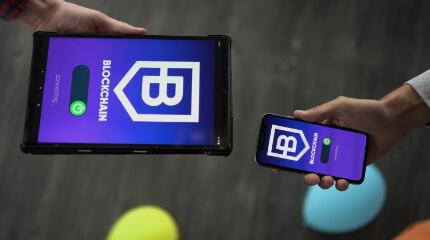
Is BlockChain Technology Worth The H ...
Unfolds The Revolutionary & Versatility Of Blockchain Technology ...


IoT Technology - A Future In Making ...
Everything You Need To Know About IoT Technology ...

Feel Free to Contact Us!
We would be happy to hear from you, please fill in the form below or mail us your requirements on info@hyperlinkinfosystem.com
Hyperlink InfoSystem Bring Transformation For Global Businesses
Starting from listening to your business problems to delivering accurate solutions; we make sure to follow industry-specific standards and combine them with our technical knowledge, development expertise, and extensive research.
4500+
Apps Developed
1200+
Developers
2200+
Websites Designed
140+
Games Developed
120+
AI & IoT Solutions
2700+
Happy Clients
120+
Salesforce Solutions

40+
Data Science










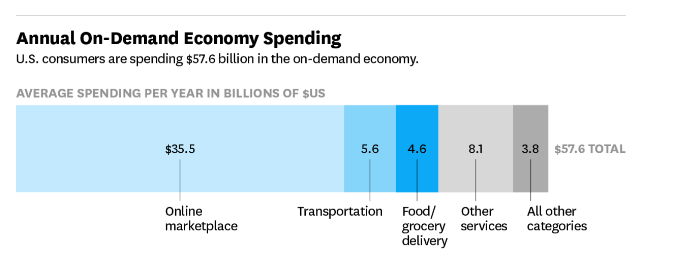


 Next
Next